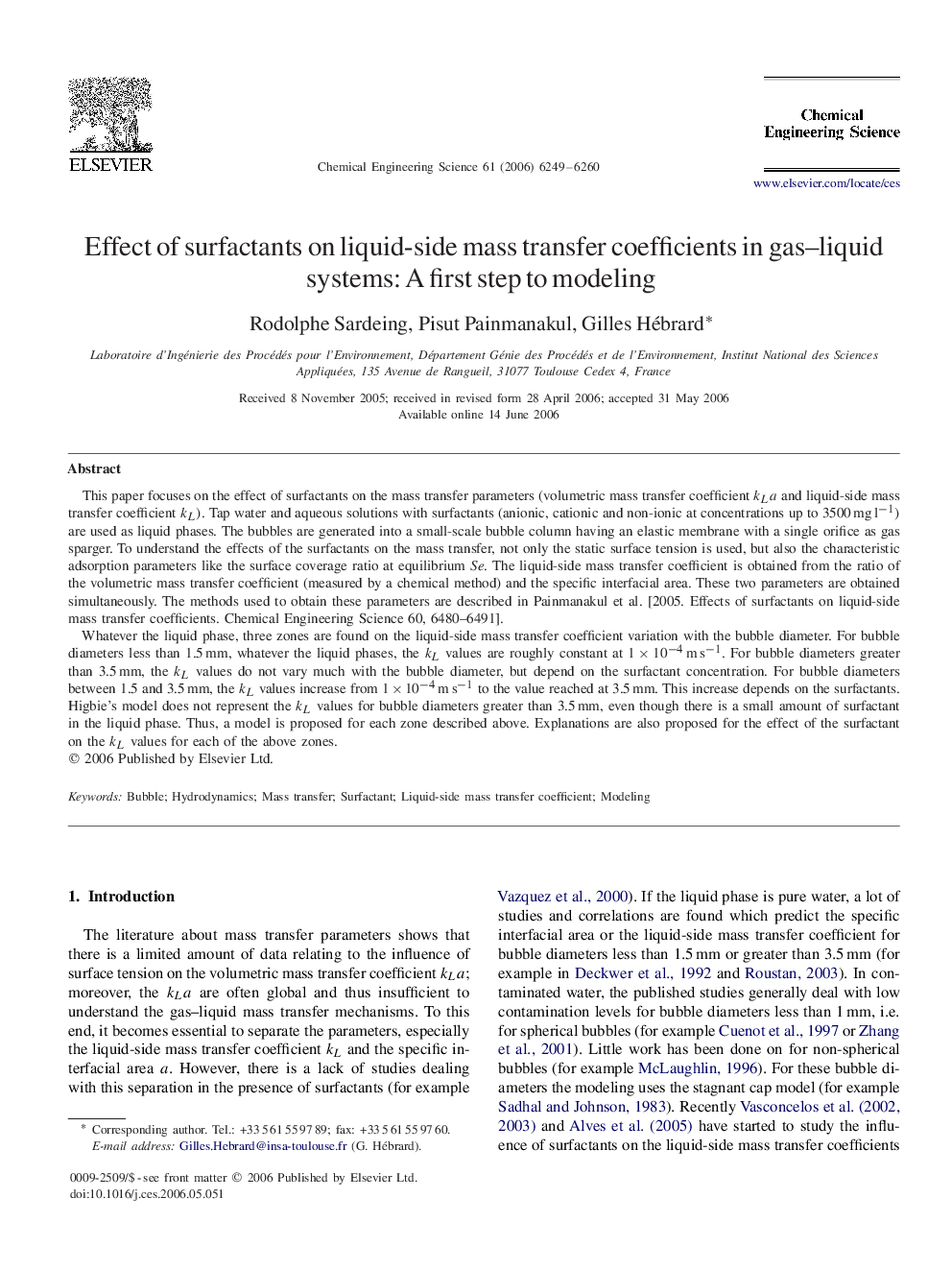| Article ID | Journal | Published Year | Pages | File Type |
|---|---|---|---|---|
| 160454 | Chemical Engineering Science | 2006 | 12 Pages |
This paper focuses on the effect of surfactants on the mass transfer parameters (volumetric mass transfer coefficient kLakLa and liquid-side mass transfer coefficient kL)kL). Tap water and aqueous solutions with surfactants (anionic, cationic and non-ionic at concentrations up to 3500mgl-1) are used as liquid phases. The bubbles are generated into a small-scale bubble column having an elastic membrane with a single orifice as gas sparger. To understand the effects of the surfactants on the mass transfer, not only the static surface tension is used, but also the characteristic adsorption parameters like the surface coverage ratio at equilibrium Se. The liquid-side mass transfer coefficient is obtained from the ratio of the volumetric mass transfer coefficient (measured by a chemical method) and the specific interfacial area. These two parameters are obtained simultaneously. The methods used to obtain these parameters are described in Painmanakul et al. [2005. Effects of surfactants on liquid-side mass transfer coefficients. Chemical Engineering Science 60, 6480–6491].Whatever the liquid phase, three zones are found on the liquid-side mass transfer coefficient variation with the bubble diameter. For bubble diameters less than 1.5 mm, whatever the liquid phases, the kLkL values are roughly constant at 1×10-4ms-1. For bubble diameters greater than 3.5 mm, the kLkL values do not vary much with the bubble diameter, but depend on the surfactant concentration. For bubble diameters between 1.5 and 3.5 mm, the kLkL values increase from 1×10-4ms-1 to the value reached at 3.5 mm. This increase depends on the surfactants. Higbie's model does not represent the kLkL values for bubble diameters greater than 3.5 mm, even though there is a small amount of surfactant in the liquid phase. Thus, a model is proposed for each zone described above. Explanations are also proposed for the effect of the surfactant on the kLkL values for each of the above zones.
